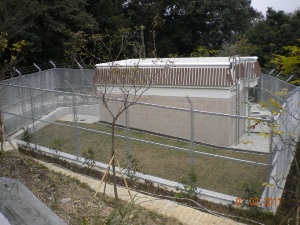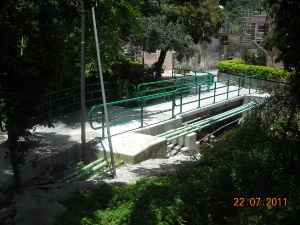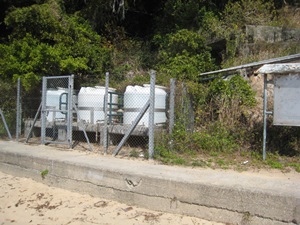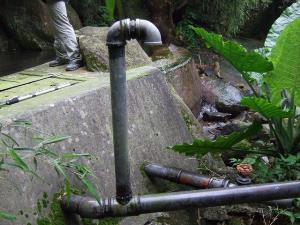Water supply to remote villages
|
Hong Kong is an international metropolis with treated water supply available to about 99.9 per cent of the population. Owing to considerations such as cost-effectiveness and other factors, Hong Kong, though a small place, still has certain remote and sparsely populated villages that do not have treated water supply and rely on raw water supply systems to provide stream water or well water for domestic use. Nonetheless, we always pay close attention to the water supply in these villages and keep the issue under regular review. Since 1980, the Water Supplies Department (WSD), with the assistance of other departments and the Heung Yee Kuk in the New Territories, has been carrying out studies on improving the water supply for over 700villages in Hong Kong and setting the priorities for providing treated water supply to these villages. After more than two decades of hard work, by the end of 2013 the WSD has provided treated water supply for 719 villages in total. Currently, only 24 remote villages with sparse regular populations are without treated water supply. The WSD, however, has decided to commence works for providing treated water supply to the Tung Ah, Tung Ah Pui, Ngan Hang and Lan Nai Wan villages in Southern District. It is anticipated that the works will be commenced this year for completion in 2016. By then, there will only be 20 remote villages left without treated water supply. Given that their locations are far away from the urban areas and the existing treated water supply system, and that there is a lack of planning for major development in nearby areas, the per capita capital cost for the provision of water supply to these villages is high. We, therefore, do not have any plan for the provision of treated water supply to these villages. The issue will be reconsidered at a more favourable time, for example when new development near these villages renders the provision of treated water supply more economical. At present, these villages are using stream water or well water for domestic consumption. These raw water supply systems, which have been in use for many years, are under the maintenance of the Home Affairs Department (HAD), while the quality of raw water is monitored and tested regularly by the Food and Environmental Hygiene Department. In the event that there is a dry out of local stream course or change in water quality, the Government will provide potable water to meet the needs of the residents. Moreover, the District Offices will also improve the raw water supply systems in villages without treated water supply where feasible. For instance, the Islands District Office has re-laid water pipes and installed additional water storage facilities for Cheung Sha Lan, Fan Lau and Tai Long Village, as well as provided water storage tanks for Po Toi Island. The Tai Po District Office has also installed additional water storage facilities and improved water pipes and water storage facilities for several villages in Tung Ping Chau. When considering whether to provide treated water for a particular remote village, we have to take into account various factors in addition to the population in the area and the per capita capital cost. For instance, low water consumption due to sparse population will cause water to stagnate inside water mains, resulting in the deterioration of water quality. In addition, we also have to consider the existence of other water sources and the quality of raw water in these villages. On the other hand, we have noticed that in some villages with treated water supply, some of their villagers are still unwilling to apply to the WSD for treated water supply, while others who have applied for it are still using stream water or well water to supplement their daily consumption for cleaning, flushing and other uses. As a result, the consumption of treated water in these remote villages is often way below our forecast. With the developments in our community, our water supply network has been expanding. It has reduced the scale and construction cost of water supply projects in some remote villages and increased the cost-effectiveness of such works as a consequence. In view of this, the Government has completed or improved the treated water supply systems for 18 remote villages over the past decade. The Government will continue to closely monitor and regularly review the water supply in the remote villages. |
|
16 February, 2014
Back


